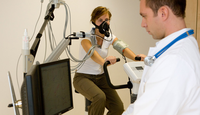Platelet Rich Plasma: Empowering Tissue Restoration And Renewal
 |
| Platelet Rich Plasma |
Platelet Rich Plasma (PRP) has emerged as a groundbreaking and versatile therapeutic approach that harnesses the body's innate healing abilities to promote tissue restoration and renewal. This innovative treatment has gained immense popularity across various medical fields, from orthopedics and sports medicine to dermatology and aesthetics, owing to its natural and regenerative properties
According to Coherent Market Insights, the Platelet
Rich Plasma Market is anticipated to
reach a value of US$ 442.7 million in 2022 and is anticipated to grow at a CAGR
of 12.4% from 2022 to 2030.
At the core of PRP lies the
remarkable potential of platelets, tiny blood cells primarily responsible for
clotting and wound healing. These platelets are a rich source of growth
factors, cytokines, and other bioactive molecules that play a pivotal role in
orchestrating the body's healing response. PRP is derived from the patient's
own blood, ensuring biocompatibility and minimizing the risk of adverse
reactions.
The Platelet Rich Plasma procedure involves a simple three-step
process. Firstly, a small amount of the patient's blood is drawn. Secondly, the
blood sample is centrifuged to separate the platelet-rich plasma from other
blood components. Finally, the concentrated PRP is collected and administered
to the targeted area, either through injections or topically.
In orthopedics and sports medicine,
PRP injections have revolutionized the treatment of musculoskeletal injuries.
By delivering a concentrated dose of growth factors directly to the affected
tissues, PRP accelerates the body's natural healing processes, reducing pain
and inflammation while promoting tissue repair. Conditions such as tendonitis,
ligament sprains, and osteoarthritis have seen significant improvement with PRP
therapy.
In dermatology and aesthetics, PRP
has found application in skin rejuvenation and hair restoration. When applied
topically or injected into the skin, PRP stimulates collagen production,
tightens the skin, and diminishes fine lines and wrinkles. Additionally, in
cases of alopecia and hair loss, PRP injections into the scalp have shown
promising results in stimulating hair growth and thickening.
Platelet Rich Plasma regenerative potential extends to other medical fields
as well. In chronic wound management, PRP facilitates the healing of
non-healing wounds and ulcers, thereby preventing infections and potential
amputations. Furthermore, in dental and maxillofacial surgeries, PRP promotes
faster recovery and reduces complications after procedures like tooth
extractions and bone grafting.
Despite its numerous benefits, PRP
is not a one-size-fits-all solution, and its efficacy may vary depending on the
individual's condition and response to treatment. Additionally, more research
is still needed to fully understand its mechanisms and optimize its
application.
Blood from cattle is collected and
used to make Bovine
Plasma. The whole blood, which contains anticoagulant, cells, and other
blood components, is used to prepare it. After that, it is centrifuged to get
rid of the cells and cellular waste. As an anticoagulant, it has 3.8% trisodium
citrate. It is put through clot testing, which demonstrates that the product's
clotting factors are functional.


Comments
Post a Comment